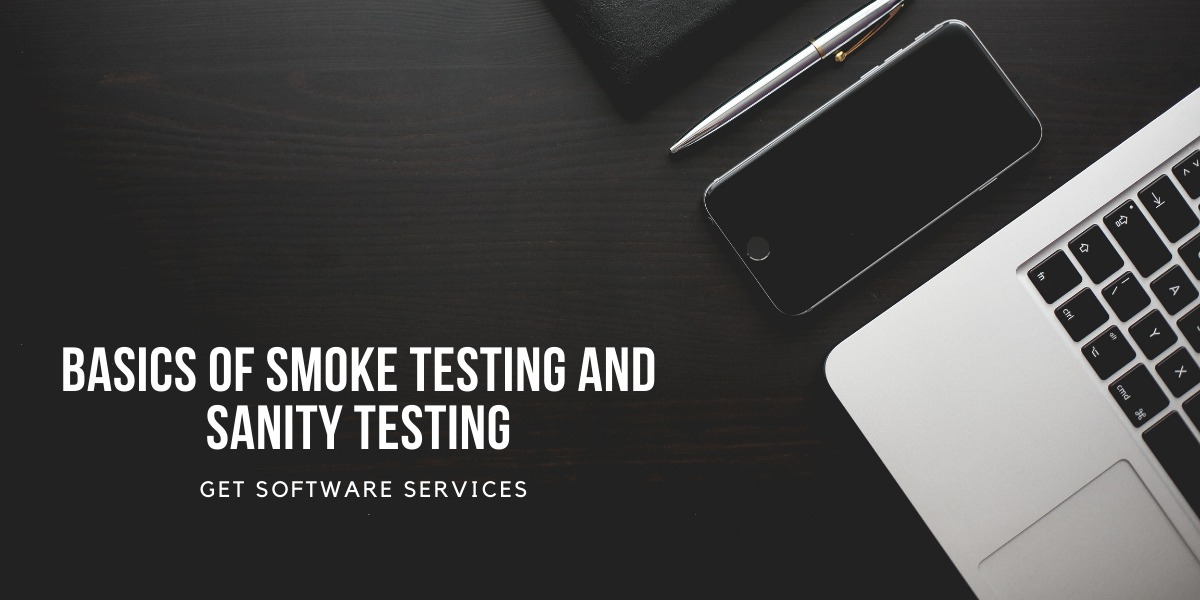
The Details of Smoke Testing and Sanity Testing
For developing impeccable software, several steps ensure the exactness of the software. Testing is vital for releasing intelligent, effective, and consistent software. Testing benefits the developer is saving time and cost and usually happens in the initial domain of the software development lifecycle. Smoke and sanity testing play their role as vital testing procedures. These tests support exposing defects and bugs during the preliminary stages of the development cycle.
Smoke Testing:
The most crucial software testing technique applied after the development of software testing is smoke testing. The software testing process helps validate if the software’s imperative functionalities work appropriately. Prior to any complete regression and functional testing, smoke testing is involved. The main intention of performing smoke testing is to raise a red flag for software applications that has flaws. The QA team does not check faulty software applications by applying the smoke testing procedure. The main objective of smoke testing is to find if the functionalities of the software application work fine.
Sanity Testing:
A sanity test is performed for software applications with minimal changes in functionality code and ensures the application is error-free without further bugs. The primary intention of sanity testing is to verify if the functionalities of the application work well. The application or project is stopped from additional testing or process by failing a sanity test, saving time and cost.
Purpose of Sanity and Smoke Testing:
The QA team ensures that the application reaches the target or needs additional testing with the smoke test. For example, the team shows if the developed software is steady or not. If the software application fails smoke testing, the QA team ceases the complete application for further testing or process.
The primary purpose of sanity testing is to make sure the designed features work appropriately. As the application or software fails the sanity testing, the project is denied saving time and cost of further testing or severity. The sanity testing also ensures that new alterations do not affect the project’s present functionalities. The testing also authorizes the latest components and features added.
Basic Features of Sanity Testing:
- A subcategory of regression testing and hence concentrates on application’s lesser part.
- The sanity testing is unscripted, mostly
- Sanity testing is not documented
- The testing is deep and narrow testing that counts limited functionalities intensely.
- Testers perform sanity testing and are not automated.
- Sanity testing is simple without the complexity and hence easily performed.
- Sanity tests are performed quickly with instant report generation.
Basic Features of Smoke Testing:
- Also known as build verification testing, the smoke testing tests the application’s essential features and directs it to the following levels based on the output.
- Smoke testing is an indispensable part of the software development cycle. Here the software application is certified by testing the features of the software application.
- By considering the test requirements, smoke testing is executed automatically or manually.
- Smoke testing relates to other setting levels such as system testing, integration testing, and acceptance testing.
- It is non-exhaustive and has minimal test cases. With valuable data and optimistic scenarios, smoke testing is performed.
Noteworthy Variances between Smoke Testing and Sanity Testing:
Smoke and sanity testing instantly checks codes’ central functionalities and determines if the software application is eligible for further tests. While considering the smoke testing, its aim is verifying if the acute functionalities work perfectly, whereas sanity testing ensures if the planned functionality works well. It is evident for people to get muddled with smoke and sanity testing. Here are a few significant differences between sanity and smoke testing.
- Smoke testing aims to validate stability, whereas sanity testing validates rationality.
- Only testers are mandated for sanity testing, whereas smoke testing needs software developers.
- The critical functionalities of any system are well identified with smoke testing, whereas bug fixes or new functionality is achieved with sanity testing.
- Smoke testing falls under acceptance testing, whereas sanity testing comes under regression testing.
- Sanity testing is not documented or scripted, whereas smoke testing is.
- The complete system is tested while considering the smoke testing, whereas only specific components get tested in sanity testing.
- The principal intention of smoke testing is to confirm if the vital functionalities are working well. Sanity testing helps in checking the new bugs and functionalities added.
- For every new build, smoke testing is conducted, while sanity testing plays its role when there is limited time for intense testing.
- To make it clearer, smoke testing relates to general health check-ups, while sanity testing is specific health check-ups.
Conclusion:
Sanity and smoke testing are vital to process for any software build, where smoke testing takes the lead position. Learning testing from the right provider works wonders for excelling in the testing process and walking as a leading tester. In that way, the get software services train’s professionals from home comfort. The top software testing company is a forerunner in software testing training. Hence, software enthusiasts looking to come out in flying colours as software testers must seek the get software services for impeccable training.



